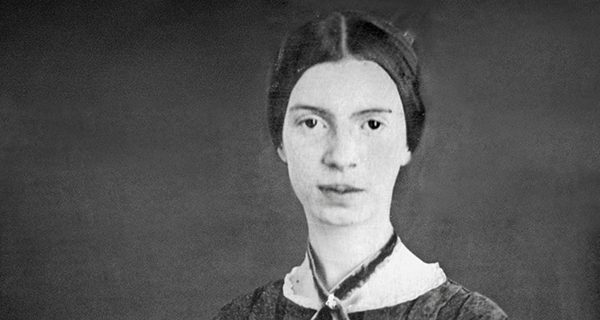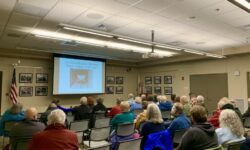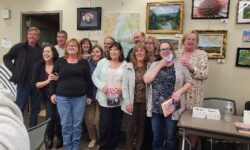[ccfic caption-text format="plaintext"]
By Amelia Tarallo
Hometown Weekly Staff
When she died in 1886 at the age of 55, Emily Dickinson left behind her family, her home, a number of diaries, and a couple thousand poems. Before her death, Dickinson had requested that her younger sister, Lavinia, destroy all of her correspondence, her diaries, and the remainder of her writings. Unable to bear destroying the works, Lavinia sought out someone who could help bring her sister’s poetry to the world.
What happened next is where things got interesting.
“After Emily: Two Remarkable Women and the Legacy of America’s Greatest Poet,” is a book written by Julie Dobrow that investigates the lives of mother and daughter Mabel Loomis Todd and Millicent Todd Bingham in their journey to memorialize Dickinson’s life and beyond. Dobrow visited the Walpole Library on Wednesday, May 15, to talk about her research and her book on the two women who made Dickinson into the venerated poet we know today. Dobrow is a professor and director of interdisciplinary studies at Tufts University.
Dobrow noted her four reasons for why she found herself intrigued in writing a biography about the mother-daughter team. The first reason was the duo’s involvement with Emily Dickinson’s legacy. The second was that they were remarkable people. The third was that they had an exceedingly complex and complicated relationship. The fourth - and perhaps most important for any biographer - was that they were fascinating. “I didn’t always agree with them,” admitted Dobrow, “but I always admired them.”
During her presentation, Dobrow told her audience about the different challenges she faced while trying to research and write this biography. The more easy of the challenges consisted of learning how to read Mabel’s borderline-illegible handwriting and sort out Millicent’s real conversations from the fake ones she wished she’d had in her diaries. A more difficult challenge was deciding what to include in the biography, especially given the flaws of these two women - including their infidelities, feelings towards others, and opinions. “I’ve tried very hard to present them as honestly as I could,” said Dobrow.
During her research, Dobrow had the opportunity to read through and examine over 700 boxes of archival information while visiting different libraries that had been gifted them. “They seemed to have saved every piece of paper they ever wrote on,” remarked Dobrow. While this is every biographer’s dream, it was also time-consuming and involved a lot of travel for Dobrow. To have this much material from a time when many women, including Dickinson herself, left instructions to destroy their documents, is extremely abnormal.
In a way, Millicent and Mabel knew that they led extraordinary lives and should be remembered.
Until now, Millicent and Mabel have mainly been known for their organizing, editing, and publishing of Emily Dickinson’s work, but their lives stretched far past that. Mabel was a talented artist, known for her illustrations of birds, bugs, and foliage. She was also a talented musician. She was a founder and president of the Amherst Historical Society. In a time when it was unlikely for any woman to leave the continent, Mabel went on several exhibitions with her astronomer husband, traveling to places like Japan, China, and several European countries. “She’s what we call today a lifelong learner,” noted Dobrow.
Millicent was just as talented and intelligent as her mother. She was homeschooled in Washington D.C. and attended Vassar College, where she focused her studies on languages, particularly French. She went on to get a degree from Harvard University, where she studied geography and geology, during a time when women were not as involved in science. She became one of the leaders in the field. This perhaps inspired her work as one of the earliest land conservationists, most notably on Hog Island in Maine.
Though they are primarily known for their work as the women who brought Emily Dickinson’s work to light, Mabel Loomis Todd and Millicent Todd Bingham’s lives were so much more. Their successes stretched into diverse fields and allowed them to live fulfilling lives.
Much in the way her subjects showcased Dickinson’s work, Dobrow has allowed Mabel Loomis Todd and Millicent Todd Bingham to shine and be seen as talented and passionate individuals they were.























